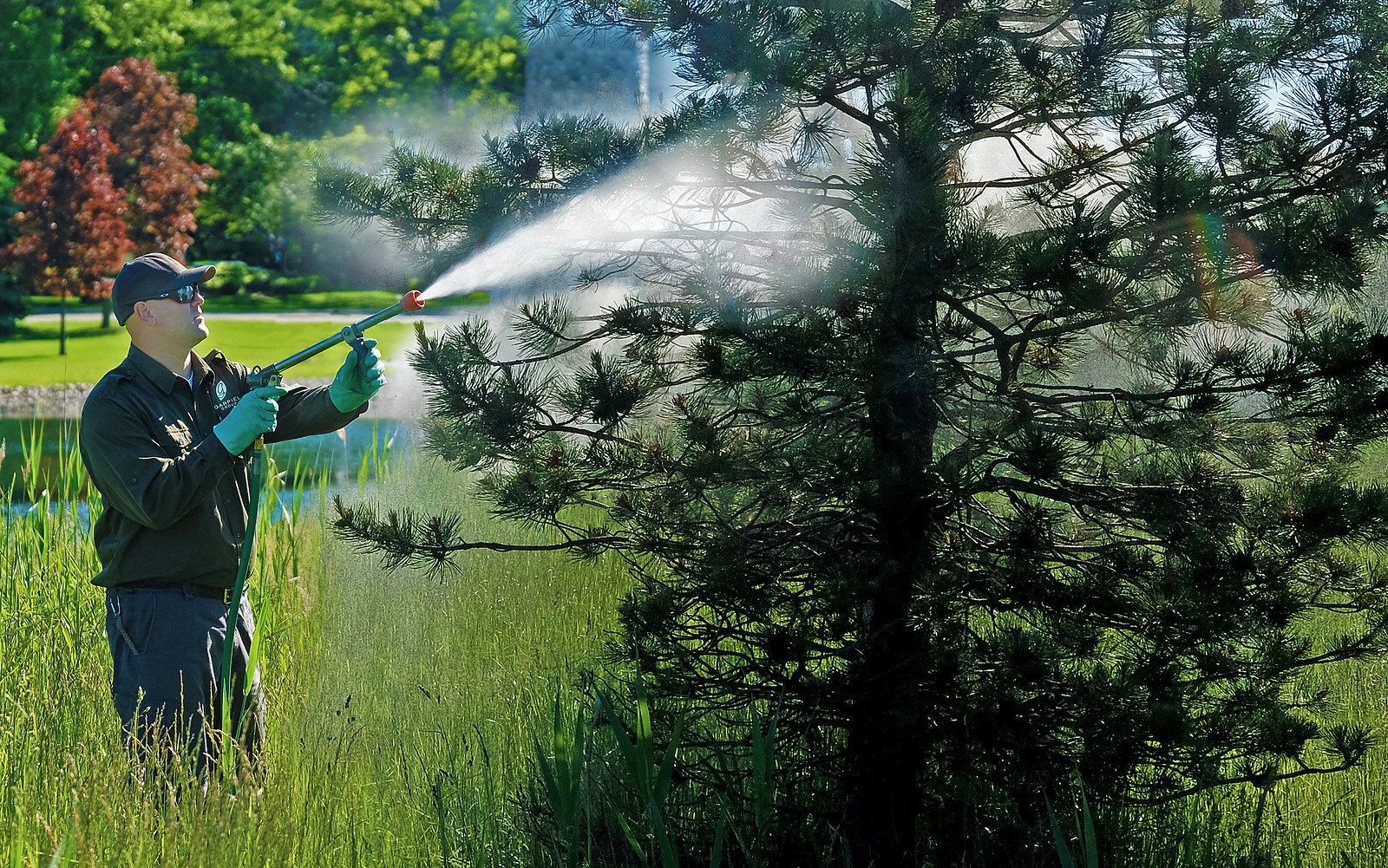
Is your spruce tree losing its needles? Does it look thin on the inside of branches? Can you see through the tree? If you answered yes to all these questions, your spruce tree is likely under attack from a fungus called Rhizosphaera needlecast.
Rhizosphaera needlecast is one of most common problems we encounter in Colorado blue spruce trees in our region. Rhizosphaera needlecast is a fungus that infests old growth and works toward new growth, making branches look thin and sometimes bare. If left uncontrolled, the disease can eventually kill the tree.
You may not realize that a tree is affected until the fungus has been in it for one or two seasons. It is common for homeowners to wait three or four years before treating for needle cast. However, it is easier to be proactive than reactive for treatment. If you wait too long to treat it, it takes even longer for the new growth to return. Rhizosphaera needlecast typically affects the lower branches of trees and works toward the top. The inner needles will have a reddish to purple color with very small black dots on the needles. A large amount of needles will accumulate on the ground at the base of the tree.
Garpiel Group has the perfect treatment to control Rhizosphaera needlecast. The most important part of the treatment is the timing. If it is too late in the season, the new growth will already be infested. The trees must be sprayed as it pushes new growth for the season. The purpose of the spray is to protect the new growth so it does not become infected with the fungus. The treatment of choice is two fungicide sprays, typically at the beginning of May and again at the end of May or beginning of June, depending on how far along the new growth is.
Garpiel Group has a very knowledgeable staff and can answer any questions regarding your trees and shrubs. We can’t replace a 30-year-old tree with something of the same size, so let us help save the trees you have! Call us today at (989) 797-4749.
